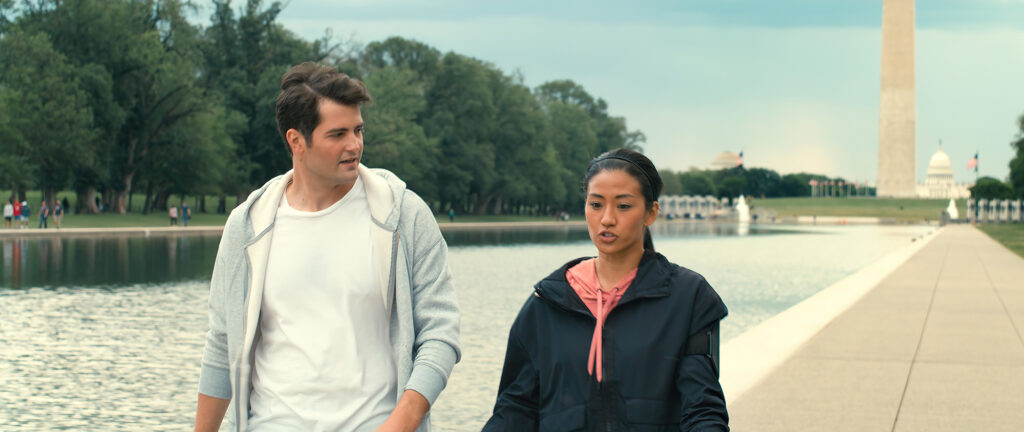
“The Road to Galena” is a heart-stirring and compassionate drama about the importance of following your dreams, despite what society may dictate, by American director Joe Hall. We are glad to interview director Joe Hall.
What are the films which have inspired you to become a film director? Did you always want to become a film director or did you have other ambitions before?
I developed an early appreciation for theater and film watching classic movies as a child, inspired by the story-telling of great directors such as Frank Capra, John Huston, and Robert Redford. Films like It’s a Wonderful Life, and Redford’s The Milagro Beanfield War, captured my imagination as they shared powerful stories of regular people.
My path to filmmaking was non-traditional. Having always had a passion for the art, I missed the opportunity for academic training in the subject and launched my career in film by starting a production company with the intent to learn the craft through hands-on experience. I’d been fascinated by short films for many years and turned to the format to hone my skill-set in directing and producing — and to build a community that would serve as a foundation for larger projects. My first film, The Toast, written by my sister, author Susan Pohlman, went on to win a best director TIVA Peer Award. I was hooked. We proceeded to shoot six shorts, among them, Matilda Mench, which won the Cine Golden Eagle for Independent Short.
What was the inspiration behind The Road to Galena?
Too many of us spend our lives driven by societal definitions of success — many holding their passions quietly inside, some for a lifetime. When I wrote The Road to Galena, I thought it would be more compelling if the hero’s aspiration was not wealth, fame or power — but a sense of place, community and purpose. The notion of giving up the trappings of material success for something meaningful seemed a more challenging decision — and a new way to frame the issue. In the film, there are no villains; every character is likeable or dislikable subject only to their circumstances — to include City Life vs. Rural Life or Big Business vs. Small. None are inherently good or bad, they are merely right or wrong in the context of our individual aspirations. In this post-COVID environment, when so many have taken the opportunity to reassess their own life journeys, it seemed the appropriate moment to share this story.

How did you get your film into production?
After several years of effort, one conversation tipped the domino that led to production of The Road to Galena. I was having lunch with a mentor and sharing the latest update on our film — we had again run into a financing hurdle and were looking at another reboot. After hearing my long-winded tale of woe, my colleague leaned forward and whispered, “I know what your problem is.” “Lay it on me,” I said. He replied, “You’ve spent the last several years solving a financial equation. Every time a variable falls out of that equation, you start rebuilding the formula from scratch. Stop trying to solve an equation and just make the movie.” I realized in that moment that we had indeed been letting our target budget drive our process. We, instead, looked at the resources available to us, revised our production to suit, and the rest fell into place.
How did you find the cast for your film, did you have a casting director or did you already know the actors?
Our casting directors, Steve Vincent and Sig De Miguel, were pivotal in identifying and securing the ensemble. Our first task was to cast the part of “Cole Baird,” as the story revolves around his journey. After having spoken with a large number of very talented actors, we chose Ben Winchell as he displayed a deep understanding of the character. Will Brittain had originally auditioned for the part of “Cole,” but early in our conversations, we both agreed that the part of “Jack Miller” was meant for him. With the two lead actors secured, the rest of the cast fell into place. Aimee Teegarden, Alisa Allapach, Jay O. Sanders, Jill Hennessy, Margaret Colin — all talented, veteran actors — brought insight and camaraderie to the production. Multi Tony- and Grammy-winning artist Jennifer Holliday was the last to join the cast as “Florrie,” and we were thrilled that she chose The Road to Galena for her big-screen debut.
How long was the shooting period and the post-production period?
We greenlighted the project in January of 2020 and began to assemble the production leadership with an eye toward an early-autumn shoot. COVID hit in March and we paused until June, at which point we felt we could shoot it safely and take advantage of the industry stoppage to secure great talent. Three weeks ahead of our planned start, COVID cases spiked so we opted to push to April 2021. We used the delay to film seasonal b-roll footage that ultimately was helpful in conveying the passage of time on screen. The six-week shoot started April 1 and we wrapped May 15. Moving immediately into post, we locked the edit, completed the color grading, sound design, score and original songs by late September and were prepared to deliver the final picture by year-end.

What were the greatest challenges when you were making the film? Are there any interesting stories or details from behind the scenes?
The Road to Galena spans twenty years and many different locations, which resulted in a complex production schedule, sometimes involving different time periods on a single shooting day. The biggest challenge, however, was shooting during the height of the COVID-19 Pandemic. There were SAG and other protocols that added expense and inconvenience, but the biggest impact was in securing extras — each of whom had to have a PCR test result within 24 hours of coming to set (which was complicated further by the remote shooting locations which required background actors to drive nearly an hour to get the test). Even with negative test results, creating crowded scenes was always difficult as we were limited on the number of people that could be on set at any given time. We compensated by periodically enlisting crew as extras, adjusting camera placement and relying on sound design.
How did the finished film change from your original idea?
While we ultimately cut or edited some scenes that we felt, in post, weren’t necessary to drive the story forward, the film reflects the script as written — and subsequently brought to life by our remarkable cast and crew. Having conceived the characters, I knew them intimately as I’d lived with them for years. Our actors, however, became the characters, portraying them in a way that was informed by their own life experiences. The result enriched the story and led to insights I’d never envisioned.
What keeps you motivated as a filmmaker? What advice would you give to beginner filmmakers?
Like great books and music, film has the ability to captivate an audience — whether for entertainment, distraction or introspection. But unlike those other media, which tell stories but leave it to the reader/listener to visualize them in their own minds, cinema offers the filmmaker the nearly limitless opportunity to convey their vision of the story, brought to life through a remarkable collaboration of creative talent from every corner of the industry. Ask anyone the name of their favorite movie and they’ll start with one, then add three, four or five others that also hang with them — whether they were seen five years ago or fifty. Cinematic story-telling is lasting and universal.
The technological advances in filmmaking and distribution have, I believe, made filmmaking far more accessible. Financing, of course, is a reliable foe for independent filmmakers, but the tools required to bring beautiful imagery to the screen have lessened in cost and the variety of outlets have increased opportunities to share one’s work with a broad audience. Ultimately, grit prevails. My advice to new filmmakers: just never give up.
